Key dates: you can send proposals right now; articles are due September 1; publication at GDC, March 2021
Spread the word: https://twitter.com/acmarrs/status/1196560311425421312
Key dates: you can send proposals right now; articles are due September 1; publication at GDC, March 2021
Spread the word: https://twitter.com/acmarrs/status/1196560311425421312
First, Ray Tracing Gems is now available on Kindle for free; it’s also free through the UK and Germany Amazon sites. Great stuff, and I’ve asked about whether it could also be made available on Google Play in some form.
When Real-Time Rendering, 4th Edition came out I decided to plunk down the cash to get the Kindle and Google Play versions, just to see how they came out. Not bad: the resolution is not as high as I’d like for a few images, but overall the results are good. It’s understandable why the image quality was not up to the 300+ DPI of some of the original material, as the book’s file would be massively larger.
What’s of interest is how much more often I’ll use the Google Play version than the Kindle. I’ll even use it more than my own private PDF of the book. This is because it’s one click away: I have the URL bookmarked for the Google Play version, so it’s up immediately, no messing about looking for the file, loading an app, or any other nonsense.
For example, today I just tried Amazon’s cloud reader for Kindle, but I run into “License limit reached,” that I have exceeded the number of devices authorized blah blah blah. My favorite line of the warning is “You may also purchase another copy from the Kindle Store” – great, thanks. There’s none of this annoyance with Google Play; I can immediately read the book since it’s tied to my Google Account. I hope Amazon someday figures out a way to determine that I’m me (judging from the targeted ads I see on Amazon, they already have, but they haven’t extended the courtesy to Kindle access).
BTW, anyone trying to reproduce antialiasing or noise images in a book or printed article, be careful: you’ll probably want to zoom in on parts of your image, and want to make the zoomed image literally zoomed up using “nearest neighbor” filtering or similar. That is, say you select a 200×200 piece of an image to magnify, to show noise. I’d resize this to 600×600 and just replicate the pixels, “select and repeat” (often called “nearest neighbor” or “hold” or “pixel replication”). The printing process will naturally try to smooth images out the other direction, so you usually need to counteract this. If you have any sure-fire tips on doing this better than I’ve described here, I (and others) are all ears.
Update: due to Apress’s kind efforts, the book’s now free on Google Play.
OK, even I’m getting a bit tired of writing about Ray Tracing Gems (not to mention Real-Time Rendering) goings ons. But, a few things:
Really, all this info except the Real-Time Rendering signing is covered on http://raytracinggems.com
Book signing (in yellow) map for GDC, right next to the restrooms – classy 🙂
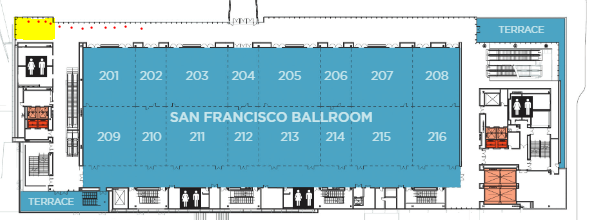
Repeat that title three times, then “and I feel fine.” This R.E.M. song has been going through my mind much of the week, as the Ray Tracing Gems book was released last Saturday as a free PDF. With Open Access, the publisher agreed to put the book up for free, even before the physical book was available. Apress has 27 other Open Access titles free to download, so they’re somewhat used to the idea.
The bragging number is that the official Ray Tracing Gems PDF has been downloaded 102K times as of today. I suspect there are a lot of pack rats out there who will download any book that’s free, or someone’s trying to make Tomas and me feel good by setting up an auto-download bot farm (if so, thanks, good job!).
But wait, there’s more. Stephen Hill spotted some typos in the preview copy and sent them on to me Saturday. Monday I made an unofficial PDF for distribution, identical to the official PDF but with his and other errata fixed. Doing so is fine under the license, which allows reasonable changes that are properly noted. The publisher and I worked on the wording on the front page to clearly label this version as unofficial, then I released it on Tuesday. It’s of course the one I recommend grabbing. Being more “hidden,” this one’s been downloaded a more believable 499 times as of last night.
“Supplies are limited” is my favorite ridiculous marketing phrase, always true since there’s a large but finite amount of material in the universe. For GDC and GTC, it’s actually true. The publisher is rush printing and shipping a few hundred copies for these conferences, and they should arrive at onsite booksellers and to NVIDIA next week, fingers crossed, knock wood, rub lucky rabbit’s foot. The hardcover book will not be available for online purchase until mid to late May, though on slightly-higher quality paper (coated glossy vs. coated matte; I believe “coated matte” is what the GPU Gems series used).
Me, I like having both the physical and the electronic forms: electronic is great for searching and for travel, physical is nicer to read (at least for me), use stickies on, add notes in the margins, and for getting signed. Speaking of which, see our page for authors’ signings and talks at the conferences.
So, this is all an odd sequence: NVIDIA released free preprints of the book during February, as did EA; the publisher released the PDF for free in March; I (or anyone) can then make a slightly improved version for distribution; the physical book will be available at conferences in 10 days but not for online purchase until May. Releasing preprints of a whole book, fixing errors in the released version – this is not something we’re used to. Personally, I know I’ve had any number of emails along the way where we each reassure the other, “no, it’s OK, this is how it works under Open Access.”
Tomas and I turned over all our final files for Ray Tracing Gems to the publisher on January 2, and we’re gathering edits from the authors. The Table of Contents for the 32 articles is now public. The publisher’s webpage is up. There’s an Amazon page in progress (BTW, the after-the-colon title, “High-Quality and Real-Time Rendering with DXR and Other APIs,” was requested by the publisher to help search engines find the book).
The hardback book should be available at GDC and GTC, with a free electronic version(s) available sometime before or around then, along with a source code repository. Also, the book is open access, under this CC license. This means that the authors, or anyone else, can redistribute these articles as they wish, as long as it’s a non-commercial use and they credit the book as the source.
Here’s the cover, which should be on the other sites soon.
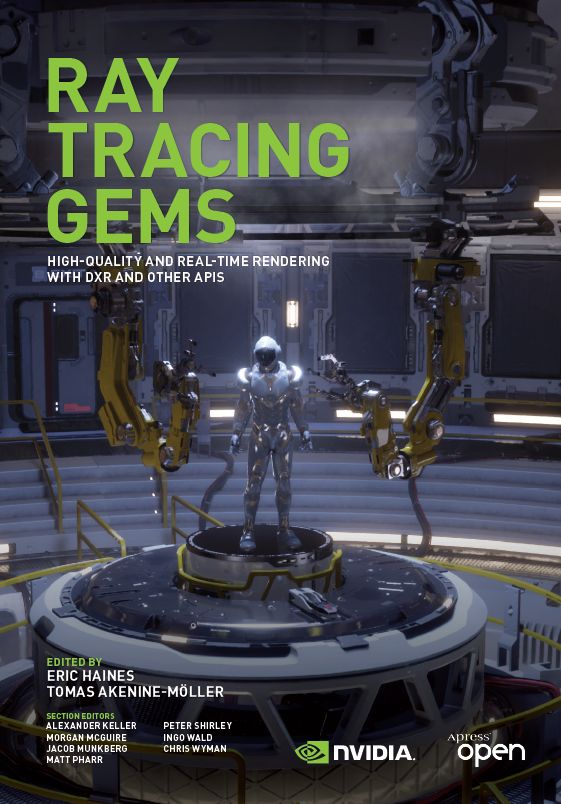
By the way, if you want to read an article about ray tracing actual gems, this one is a good place to start. I happened upon it by accident, and it’s educational, approachable, and not dumbed down. The design criteria for a good gem cut are fun to read about: maximize reflected light as well as contrast, take into account that the viewer’s head will block off light, and so on. If you need a more serious paper from graphics people, there’s this article. Surprisingly, though fairly old, it is newer than any of the articles cited by the first, much newer article.
Short version: the first book on ray tracing, An Introduction to Ray Tracing, from 1989, is now free to download. You can get the PDF or DJVU version. Note that the PDF has been updated with one erratum fix (so far), and currently is at version 1.1.
Longer version: with Pete Shirley releasing for free his three introductory mini-books on ray tracing this summer, then Matt Pharr releasing the book Physically Based Rendering for free, I asked Andrew Glassner if he could get the rights to release the classic An Introduction to Ray Tracing. He was game, clearing it with the authors, tracing down the right person at Elsevier to ask, going through the paperwork, and – freed! He just wrote me:
I’ve just now received the countersigned rights release for An Introduction to Ray Tracing. I guess the contract was in my name, because I now own the rights! I hereby grant you permission to publicly share the aforementioned book, or the manuscript thereof, or an electronified version of the manuscript thereof, electrically encoded and presented using one or more typefaces of human design, upon a website for the general reading pleasure of the general reading public. Go for it!
So going for it I am. Enjoy! Yes, it’s ancient. But, surprisingly, it’s still a fine introduction in a bunch of ways – math doesn’t rot, and many of the bits from back then are still used today – stochastic sampling, bounding volumes, adaptive supersampling, etc. (Matt Pharr agrees). Andrew’s page about the book (and some history about the cover) is here.
Me, I expect this will cut into my yearly royalties – I earned $6.22 last year on the book – but, ah, the giant sacrifices I make for The Greater Good, and so humble, too. If you consider free books a travesty, you can always buy a copy off this insane page on Amazon – a steal (on someone’s part) at $588.23. The normal Amazon book page is not so bonkers.
Update: Andrew was asked what sort of license the book is under. We discussed it and he chose the Attribution 4.0 International (CC BY 4.0) license, the most liberal of the CC licenses. To quote the main bits:
Do see the whole license page for further details.
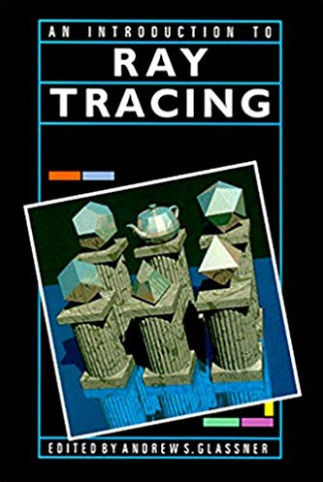
If by some miracle you use the first printing of the book, I’ve made an errata page. All these errors are fixed in the PDF and DJVU versions, except as noted.
One regret Tomas and I have about the back cover of “Real-Time Rendering, 4th Ed.” is not going with this initial response: “‘The second-best book on rendering there is.’ — Matt Pharr”; would have been hilarious.
So, I don’t think my work on Real-Time Rendering, 4th Edition will ever be done, even though the thing’s published…
First, yes, we also were unhappy with how some of the images printed in the first printing of the book. And yes, I’m happy to report the second printing is better quality; we wish the first had been, as well, and we are all sorry it wasn’t. The main sources of problems are atoms and the process. There’s a limit to how thick a book can be and not have its spine break, or be readable without crushing your chest. The publisher pushed up the thickness on the second printing, which improved the readability of some figures (I’m ordering one now, after having seen it, so I can compare). Fingers crossed that the binding holds up. It’s why we published two chapters and two appendices online – a 1350+ page book is basically unprintable, let alone readable.
All diagrams and some of the images (those we have rights or permission for) are available for viewing and download on our website, about 2/3rds in total, and I added more today. If we are missing any that would help you understand the text better, please let me know and I’ll see if I can clear rights for them to be redisplayed there – my email’s on the website at the bottom. As important, we hope to provide slightly-improved images to the publisher for the far-distant day when a third printing might be made.
Which edition do you have? I think you can tell by thickness, with first printing being about 4.8 cm (1-7/8″) thick overall, and second printing being around 5.4 cm (2-1/8″), maybe more.

I was interested to read that Matt Pharr had the same problems with the latest edition of “Physically-Based Rendering.” He writes:
It was a terrible feeling, having put endless hours into the book, putting in all of our own best efforts to make the very best thing we could, and then having something awful being put in readers’ hands. We had no control of all sorts of details beyond the text itself
Yup, I can relate. The last thing we see is the print-ready PDF, and after that it’s hope for the best. At least no sections of the book were deleted, duplicated, printed upside-down, or in inverse colors.
I see about 18 out of 676 figures that are noisier or darker or have less contrast than I would like. I am interested in which figures you find difficult to understand. Personally, I’ve love it if the electronic version and paper version were “bound together” and always came as a set – the electronic version, though not as high-resolution as I’d like (unsurprisingly, Amazon didn’t want to provide the 2.2 GB PDF that we get when we compile the book ourselves), does have more readable figures.
My personal take-aways are two: don’t try to print images showing noise, they’ll just about never print well, and don’t try to print images that are somewhat dark, they’ll always seem to get darker when printed. The first is a new lesson learned, the second is one I’ve seen in previous editions but always hold out the hope that it’ll be better this time around.
It clearly takes a village to write the book Real-Time Rendering. Ola Olsson pointed out this entertaining bit on Google Scholar:
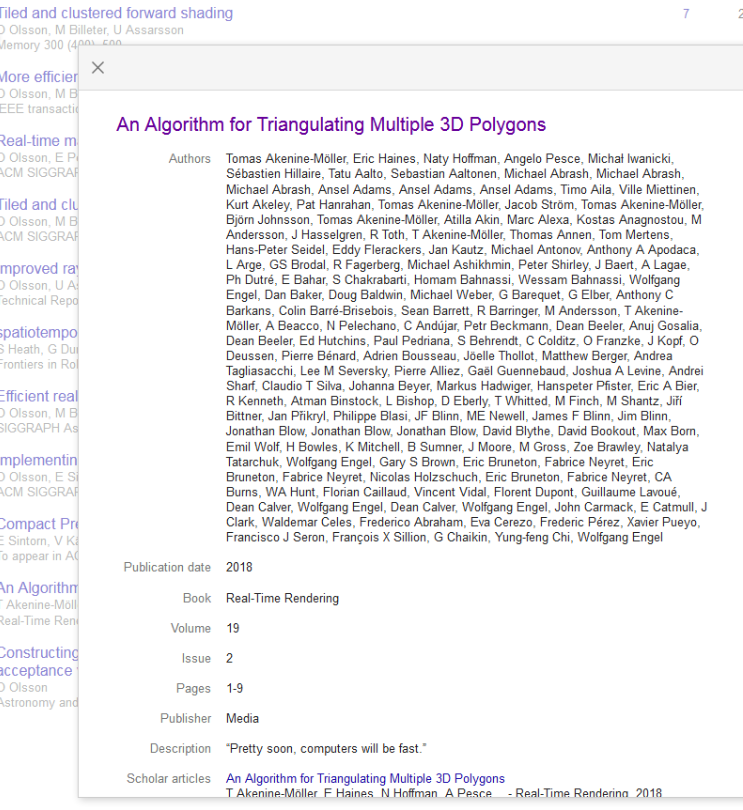
The fourth edition appears to be Volume 19 Issue 2. The article mentioned does exist, but is the very last reference in the book (#1978). The number of authors on the paper is impressive, quite an increase from the original three for this article. Ansel Adams, among others, gets listed three times as an author – excellent CV padding. My favorite, though, is the description of the article, a quote by Billy Zelsnack used at the beginning of our chapter “The Future.”
I poked around a bit more and found some alternate reality listings, such as this:
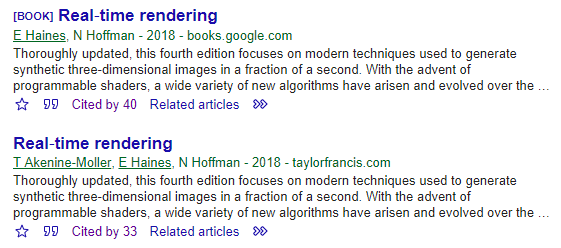
In both 4th editions our new three authors don’t show up. More disturbing is that in one universe’s edition Tomas Akenine-Möller also no longer exists (sad, since he’s listed six times as an author in the first image). And a strange universe it is, where the book has 40 citations, despite being out for less than 6 weeks. The prescience of some authors citing it is impressive, with one article published in the year 2000 referencing this fourth edition. Research must be wonderfully accelerated there, with developers being able to read about future breakthroughs that they can then write up.
Now that I’m back from SIGGRAPH, I can catch up on all the things. So here’s one: win a free copy of Real-Time Rendering, 4th Edition. Our publisher is giving away three copies, deadline to enter is August 31.
As far as actually receiving a copy of the book, well, if it’s any consolation, none of us authors have a physical copy at this point, either. Our publisher wrote on August 8th:
This reprint should be in the warehouse within the next 3 weeks. I assume the fulfillment dept will give customer orders priority over author copies.
So it’s a case of the shoemaker’s children go barefoot. Amazon says the book’s back in stock on August 27th.
I do like that the first three chapters are free on Amazon, for Kindle, and Google Play, so I hope that will tide people over until these ship. That this much content was made free was unexpected, a happy decision on the publisher’s part. If you’re done with those chapters and still waiting, don’t forget to read Pete’s now-free books on ray tracing.
I got to see a physical copy of our book at SIGGRAPH, so know such things exist. I also bought the book on Kindle (which at first had some download problem on my iPhone and PC, but downloaded fine the next day) and Google Play (surprised to find it there; same price as Kindle, by some amazing coincidence), as I wanted to see if a layout problem in my local copy was present in the book (happily, it wasn’t – ahhh, the mysteries of LaTeX).
One of the best parts of SIGGRAPH was actually meeting my coauthors. The wild party on the yacht that night in Vancouver Harbor was really something, too, but then I realized I made that up.
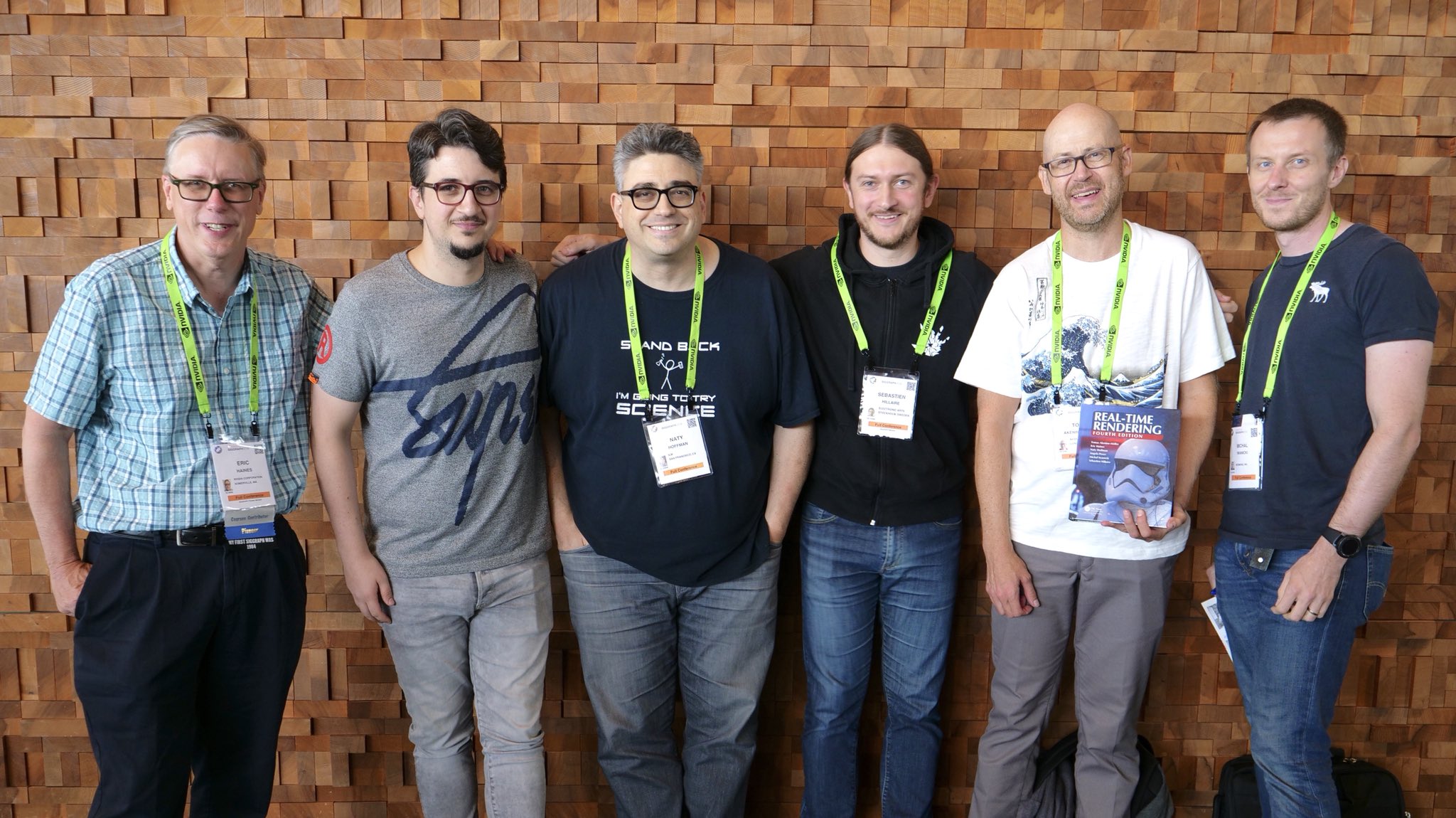
Eric, Angelo, Naty, Seb, Tomas, and Michal; photo courtesy of Mauricio Vives